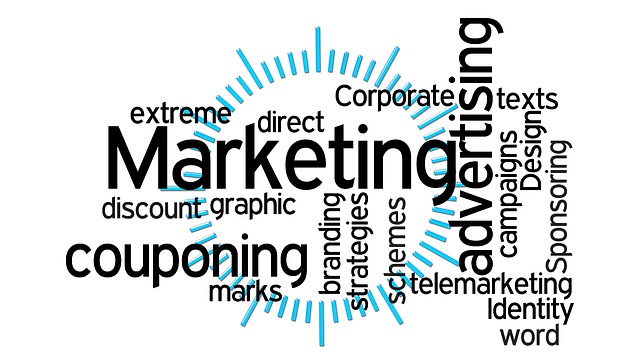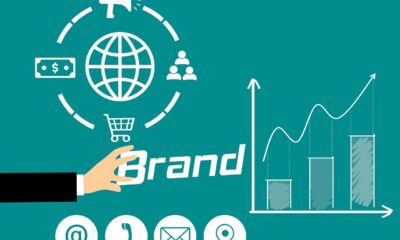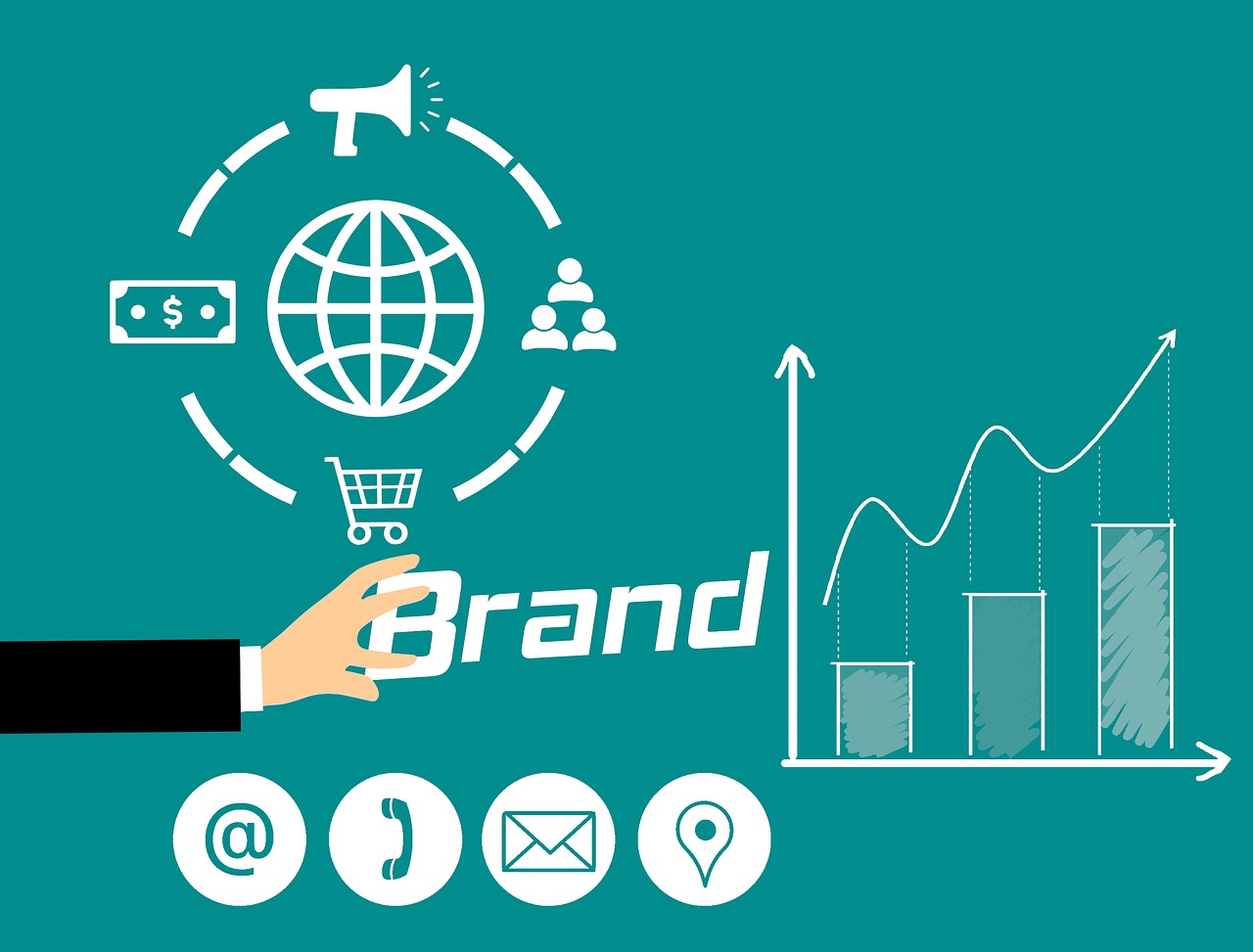Marketing
How To Boost Your Marketing With Content & PPC
Published
4 years agoon


Content and PPC have always been an important part of digital marketing. Consequently, it is only natural that using PPC in combination with a good content strategy can help you boost marketing. Here’s how to boost your marketing with content and PPC.
#1 Get Traffic with PPC Ads
First of all, you need to use PPC ads to get more quick traffic. Pay-per-click ads are a powerful way to get started when your website is newly created or hasn’t been getting a lot of traffic for a while. The traffic you get from PPC ads can help you boost the performance of your content which will, in turn, allow you to get better results with your content marketing campaigns.
For example, you can create a series of articles on your website on covering various topics you think your audience would be interested in. Then, you can launch a PPC campaign with a variety of ads for each article. Not only will this attract traffic to your website, but it will also show you which topics are more interesting to your audience and which ones you should focus on more.
#2 Launch Remarketing and Retargeting Campaigns
Another thing you should do is launch remarketing and retargeting campaigns. To put it simply, both remarketing and retargeting are techniques used to advertise to the same person more than once. Remarketing is usually done via email while retargeting is used with web traffic. Remarketing is often used as an umbrella term with retargeting being a subset of remarketing.
PPC can be especially useful for retargeting while content delivered via email such as newsletters can be used for remarketing. Remarketing and retargeting can help you make your campaigns more personalized and targeted. They can also help you increase the effectiveness of your campaigns and help you better understand your audience.
#3 Promote Content with Facebook Ads
Facebook Ads can be considered a type of PPC ads but for social media. In fact, Facebook Ads can be displayed both on Facebook and on Instagram (all the Instagram ad campaigns have to be launched from Facebook and you don’t need an Instagram account). Like your regular PPC campaigns, Facebook Ads can be used to promote your content too. Moreover, you can promote content both from your website and from your social media profiles.
As Anne Holliday from the writing services reviews site Writing Judge says, “Facebook Ads give you a lot of control over your campaigns. You also get valuable insights about your audience that you can then use in your future ad campaigns.”
#4 Create Effective Landing Pages
Landing pages may not be on your priority list, but they definitely should be once you start working with content and PPC. Basically, landing pages are dedicated pages created specifically for your campaigns that feature a single product or allow the visitor to make a single action such as subscribe to your newsletter, fill out a customer survey, get a free coupon or gift card, and so on.
Landing pages can be used in your pay-per-click campaigns when you don’t want to send your audience to your site or your social media – and instead send them directly to the page that lets them perform the action you want them to make. Besides, content marketing is always involved here because you need to create actionable content for your landing pages for them to work the way you want them to.
#5 Improve Brand Awareness with PPC Ads
Unsurprisingly, PPC ads can be used to improve your brand awareness. If you create the right content and direct traffic to it with the help of such ads, you will be able to launch successful pay-per-click campaigns. Brand awareness is important if you want to get more exposure and build a good reputation for your company.
For instance, you could create an article or two explaining what your business is and what you have to offer. Then, with the help of PPC ads, you can direct traffic to the articles. Just remember that you need to be offering something valuable to your audience. Alternatively, you can simply launch regular PPC campaigns which will still be great for improving brand awareness.
#6 Find the Right Tools for Content and PPC
The tools you are using can make a huge difference. If you are using the right tools for PPC and content, you will be able to perform necessary tasks faster, create high-quality content and materials, and streamline all your processes. Grammar and spelling checkers for text, editing software for images and videos, graphic design programs for ads, etc. – all of these are a must for boosting your marketing with content and PPC.
#7 Use PPC Keyword Data to Get Insights
Contrary to popular belief, the data you collect with your PPC campaigns shouldn’t only be used for future PPC campaigns – it can also be used for your other marketing efforts, including content marketing. PPC keyword data can be particularly useful and can get you valuable insights about your audience down to the personal preferences of various segments.
#8 Write Powerful CTAs and Headlines
CTAs (calls to action) and headlines are an integral part of any marketing campaign because they are meant to encourage action in your audience. All your pieces of content need to have good headlines and CTAs while your PPC ads might have to use one of the two or both depending on the format of your advertisements.
#9 Think About the Mobile Experience
Last but not least, you need to think about the mobile experience of your audience. PPC campaigns are often designed for desktop users which means you will probably need to create a separate mobile-friendly version for each of them. Or you could just accept that fewer people will see your ads (Google searches display just one ad at the top). Content marketing also needs to take into account mobile-friendliness because the mobile version of your site will definitely look different from the desktop version.
Final Thoughts
To sum up, using content and PPC to their fullest is a great way to boost your marketing and improve your advertising campaigns. Use the tips in this article and you will be able to improve your digital strategy and maximize results.
Content and PPC have always been an important part of digital marketing. Consequently, it is only natural that using PPC in combination with a good content strategy can help you boost marketing. Here’s how to boost your marketing with content and PPC.
#1 Get Traffic with PPC Ads
First of all, you need to use PPC ads to get more quick traffic. Pay-per-click ads are a powerful way to get started when your website is newly created or hasn’t been getting a lot of traffic for a while. The traffic you get from PPC ads can help you boost the performance of your content which will, in turn, allow you to get better results with your content marketing campaigns.
For example, you can create a series of articles on your website on covering various topics you think your audience would be interested in. Then, you can launch a PPC campaign with a variety of ads for each article. Not only will this attract traffic to your website, but it will also show you which topics are more interesting to your audience and which ones you should focus on more.
#2 Launch Remarketing and Retargeting Campaigns
Another thing you should do is launch remarketing and retargeting campaigns. To put it simply, both remarketing and retargeting are techniques used to advertise to the same person more than once. Remarketing is usually done via email while retargeting is used with web traffic. Remarketing is often used as an umbrella term with retargeting being a subset of remarketing.
PPC can be especially useful for retargeting while content delivered via email such as newsletters can be used for remarketing. Remarketing and retargeting can help you make your campaigns more personalized and targeted. They can also help you increase the effectiveness of your campaigns and help you better understand your audience.
#3 Promote Content with Facebook Ads
Facebook Ads can be considered a type of PPC ads but for social media. In fact, Facebook Ads can be displayed both on Facebook and on Instagram (all the Instagram ad campaigns have to be launched from Facebook and you don’t need an Instagram account). Like your regular PPC campaigns, Facebook Ads can be used to promote your content too. Moreover, you can promote content both from your website and from your social media profiles.
As Anne Holliday from the writing services reviews site Writing Judge says, “Facebook Ads give you a lot of control over your campaigns. You also get valuable insights about your audience that you can then use in your future ad campaigns.”
#4 Create Effective Landing Pages
Landing pages may not be on your priority list, but they definitely should be once you start working with content and PPC. Basically, landing pages are dedicated pages created specifically for your campaigns that feature a single product or allow the visitor to make a single action such as subscribe to your newsletter, fill out a customer survey, get a free coupon or gift card, and so on.
Landing pages can be used in your pay-per-click campaigns when you don’t want to send your audience to your site or your social media – and instead send them directly to the page that lets them perform the action you want them to make. Besides, content marketing is always involved here because you need to create actionable content for your landing pages for them to work the way you want them to.
#5 Improve Brand Awareness with PPC Ads
Unsurprisingly, PPC ads can be used to improve your brand awareness. If you create the right content and direct traffic to it with the help of such ads, you will be able to launch successful pay-per-click campaigns. Brand awareness is important if you want to get more exposure and build a good reputation for your company.
For instance, you could create an article or two explaining what your business is and what you have to offer. Then, with the help of PPC ads, you can direct traffic to the articles. Just remember that you need to be offering something valuable to your audience. Alternatively, you can simply launch regular PPC campaigns which will still be great for improving brand awareness.
#6 Find the Right Tools for Content and PPC
The tools you are using can make a huge difference. If you are using the right tools for PPC and content, you will be able to perform necessary tasks faster, create high-quality content and materials, and streamline all your processes. Grammar and spelling checkers for text, editing software for images and videos, graphic design programs for ads, etc. – all of these are a must for boosting your marketing with content and PPC.
#7 Use PPC Keyword Data to Get Insights
Contrary to popular belief, the data you collect with your PPC campaigns shouldn’t only be used for future PPC campaigns – it can also be used for your other marketing efforts, including content marketing. PPC keyword data can be particularly useful and can get you valuable insights about your audience down to the personal preferences of various segments.
#8 Write Powerful CTAs and Headlines
CTAs (calls to action) and headlines are an integral part of any marketing campaign because they are meant to encourage action in your audience. All your pieces of content need to have good headlines and CTAs while your PPC ads might have to use one of the two or both depending on the format of your advertisements.
#9 Think About the Mobile Experience
Last but not least, you need to think about the mobile experience of your audience. PPC campaigns are often designed for desktop users which means you will probably need to create a separate mobile-friendly version for each of them. Or you could just accept that fewer people will see your ads (Google searches display just one ad at the top). Content marketing also needs to take into account mobile-friendliness because the mobile version of your site will definitely look different from the desktop version.
Final Thoughts
To sum up, using content and PPC to their fullest is a great way to boost your marketing and improve your advertising campaigns. Use the tips in this article and you will be able to improve your digital strategy and maximize results.
Dominic Beaulieu is an expert writer who specializes in creating various training and professional upgrade courses, materials and manuals. He mainly writes on development, digital marketing, design, business strategies, etc.


You may like
-
Word-of-Mouth Commerce is the Next Evolution of Influencer Marketing
-




Product Marketing in 2024: 5 Steps to Guarantee Success
-
WiMi Developed Execution Platform for AutoAIM Analytics to Facilitate Machine Learning in Marketing
-




Online Marketing Gurus announce their expansion into the middle east
-




Generating New Leads: 3 Strategies A Company and Its Marketing Team Should Implement
-




The Role of Artificial Intelligence in Marketing and Customer Service
Marketing
Product Marketing in 2024: 5 Steps to Guarantee Success
Published
4 months agoon
January 3, 2024

Marketing is an ever-evolving industry, and company directors who do not understand that will get left in the dust in 2024.
Marketing strategies and tactics are the only way to set your product or service apart from your competition.
In an increasingly demanding world, consumers and customers want more – for less. That is the nature of consumerism, and the only way to give your business the upper hand is to embrace the notion of selling.
To guarantee the success of a new product or service entering the market in 2024, you need to think creatively and prioritize intuitive strategies. Follow these five simple steps below for the most effective rollout strategy:
- Create Hype
There is something uniquely magical about a product launch that employs a hype-generating element.
Getting consumers and customers excited about your product long before they even know what it is, is such a powerful moment for any marketing team.
Timing is everything with this specific tactic, so thoroughly research your market before launching your concept.
- Customer-Generated Content
In the modern world, trust is not given freely.
So many product launches are over-promised and grossly under-deliver, leaving customers disappointed and even feeling scammed.
By implementing a strategy of using customer-generated content in your marketing plan, you can show the world (and potential customers) that your product is worth their time and money, generating new leads.
- Offer Exemplary Service
With the world literally at your customer’s fingertips, there is a good chance that they have seen and heard it all by now.
There are likely multiple products or services already on the market that are similar to yours – your job is to set yours apart from the rest.
An effective way to do that is to offer an exemplary customer experience for all new and existing customers. Product marketing is only roughly 50% product; the rest is experience-based.
To learn more about product marketing, click here.
- Discount Codes
When launching a new product or service, your main goal should be to generate brand awareness. Do not expect much at first, particularly if you are a new brand.
To entice customers into making a purchase, offer discount codes to new buyers or coupon codes for repeat business. These costs should all get built into your product pricing models so you never run the risk of losing profit.
- Embrace Multi-Platform Marketing
A few decades ago, product marketing strategies involved three main platforms: television, radio, and print media. If you had something to sell, all you needed to do was buy the proportionate ad space for your product.
Life is not so simple anymore, and there are multiple platforms where a company can advertise a new product or service – but it will take a bit more work from the marketing team.
Find your customers online, and advertise where they are commonly found – on social media platforms. Adopt a multi-platform marketing strategy and you will likely hit the bull’s eye.
To End
Product marketing is far from rocket science, but it is a science. The science behind the psychology of marketing is an awe-inspiring one – and when it is right, and works better than you could ever have imagined, that feeling never gets old.
Marketing
Generating New Leads: 3 Strategies A Company and Its Marketing Team Should Implement
Published
1 year agoon
April 20, 2023

Cast your mind back to the last purchase you made. Did you see an advertisement and then decide to buy? Or did you research the business/product and then make your purchase? Either way, over 51% of sales professionals admitted that lead generation was one of the most challenging aspects of their jobs.
However, new ways to generate leads are being discovered daily, and popular techniques used by marketing teams today might not be used in a year or so. Therefore, your team must constantly devise and trial new ways to generate leads so that you can evolve your strategy.
From using webchat software to asking satisfied consumers for testimonials, you can use many ways to update your practices. To help you, we’ve outlined several strategies your company and marketing team should implement below.
Implement A Live Receptionist Service
Between providing personalized customer experiences, gathering customer data, and juggling many more day-to-day tasks, receptionists often have a lot on their plate. So much so, that more and more businesses are turning to an external live receptionist service to help balance the workload.
These live receptionists can answer calls straight away, and help keep your leads intact. With certain live receptionist services, you will be able to set up your own preferences, allowing you to receive immediate notifications if you so wished.
For more information about a live receptionist service, consider visiting providers’ websites like Signpost. Using their live receptionist service, your business can delight customers with local receptionists, answer queries, and much more. Visit their website or contact them directly for more information today.
Create A Social Media Presence
With over 302.25 million American users on social media, in today’s digital age, businesses need to have an excellent social media presence to market their products/services, engage with consumers, post-marketing campaigns, and much more. Due to this, social media can be a valuable tool for generating leads and one that your marketing team should take advantage of.
You can do this by engaging with the right focus groups, connecting with like-minded professionals, creating engaging content, creating polls that customers can engage with, commenting on third-party posts, and much more – all of which can tempt leads to engage with your posts and potentially make a purchase.
Ask Repeat Customers For Testimonials
Another way that your company and marketing team can generate leads is directly from your loyal customers themselves. Collectively Google, Facebook, TripAdvisor, and Yelp are home to 88% of all customer reviews, and due to this, it is easier than ever for customers to research companies and their products/services.
Therefore, it would be a wasted opportunity for businesses not to use their customers as a lead generation technique by asking them to leave testimonials. Whether it’s a written review or a short clip of them talking about your products/services – don’t hesitate to ask your loyal customers for testimonials. You can publish these on your social media pages and company website, as these will resonate with your prospects and turn leads into prospective customers.


Company growth can be tricky, but it’s one of the problems business owners typically enjoy. Still, being overwhelmed by growing clients can create management problems and become a strain on your current crew.
While you can hire more employees, you’ll also have to hire more management, which can significantly reduce your profit. Moreover, if you can’t sustain your company’s growth, you’ll have to fire some of the staff, damaging morale. Also, retaining top talent can be challenging.
Luckily, you can outsource some of the work to a white-label agency to help you overcome challenges associated with business growth. In addition, you will be able to fill crucial work and technical holes and provide your clients with more services.
Keep reading for other benefits you can get if you partner with a white-label agency.
What Is White-Label Marketing?
White-label marketing is a type of marketing where a company uses another business’ marketing services under its name. In other words, the marketing company makes marketing content under the name of the company that hired it. For instance, a company that specializes in SEO can use white-label marketing to reach a marketing crew that can offer content writing and graphic design.
That said, white-label marketing can include different parts of a marketing campaign. The company can decide to use it for its entire marketing plan or just for one or more services, including SEO, social media, website design, email marketing, digital marketing advertisements, etc.
How Does White-Label Marketing Work?
If a company offers marketing services and has many clients that need various specialized services, it can outsource some of the work instead of hiring more employees for each service.
In that case, the company can offer many different services under its own name while another company handles the tasks.
What Are the Benefits of White-Label Marketing?
White-label marketing offers numerous benefits, including reduced costs and access to advanced tools. That’s especially true for full-service marketing companies.
Here are 12 other reasons to consider using white-label marketing.
1. Position Yourself as a Full-Service Agency
One-stop agencies can more easily attract and retain clients but may experience some blockages along the way as not many companies can afford to hire a broad team of specialists like developers, SEO specialists, content writers, graphic designers, etc.
However, using white-label marketing enables you to position your business as a full-service company that offers various specialized services like Google Ads, SEO, copywriting, website design, social media, etc.
2. More Time to Spend on Other Projects
With white-label marketing, you can spend more time on other business projects. For example, an outside agency may focus on developing new design products, ultimately saving you the time you can use to focus on what your business is best at. Ultimately, this will result in satisfied employees and clients and quality work.
3. Avoid Unreliable Freelancers
If you tried to work with freelancers to offer additional services, you likely discovered they can be unreliable. Even if you find a trustworthy freelancer, they may move to other opportunities. On the other hand, white-label partnerships will likely develop into long-term relationships that boost both businesses.
While high-quality white-label partners can be more expensive than freelancers, they ensure deadlines are met, projects are completed to high standards, and communication is responsive. Moreover, you can check their trustworthiness through their reviews, previous clients, case studies, and testimonials.
4. Reduced Expenses
By using a white-label marketing services provider, you can avoid several costs associated with maintaining in-house specialists, including salaries, benefits, and training costs. Moreover, you can reduce your overhead expenses by using another company’s technology and expertise.
5. Leverage the Power of Social Media
Social media is an effective marketing tool as it allows you to build brand awareness, boost engagements, run campaigns, educate consumers, and increase conversions. Still, scheduling social media posts won’t get you more active followers or a return on investment (ROI).
While social listening can help you measure brand sentiments and attract social conversations and brand mentions on significant platforms, social monitoring experts aren’t easily found, and social listening tools can get pretty pricey.
Fortunately, white-label companies have access to expensive tools and knowledgeable resources that allow you to leverage social media to reach your goals. Apart from that, it can save you both time and money you would otherwise spend on researching, buying tools, training, and hiring.
6. Evaluate Your Social Media Strategy and Campaigns
A white-label marketing agency will provide valuable consultations on social media strategies and campaigns and help you improve them to suit your client’s needs.
Let’s say your crew has developed effective messaging to support your campaign and beautiful graphics to engage the audience. In this case, your white-label partner will suggest the right language, tone, or imagery to boost your campaign’s effect. Moreover, they can guide you on the right hashtags and story angles to boost your visibility.
7. Keep Up with Algorithm Changes
Social media platforms frequently change their algorithms to improve user experience. However, this often translates to reduced organic visibility. Fortunately, skilled white-label partners can develop strategies based on the algorithm changes by boosting the organic content with paid advertising.
White-label companies have professionals who will examine algorithm changes and tweak their strategies to suit the new algorithm. And while they’re at it, you can focus on what you’re doing best.
8. Access Advanced Tools
Financing different tools and software to power your agency can get expensive. But when you work with a white-label company, you can access advanced tools like keyword research tools and backlinking software at no additional cost other than what you pay your white-label partner.
Besides having access to tools like SEMrush and Ahrefs, they may also use tools like Canca and Adobe Photoshop, which can help you complete different tasks you couldn’t have done otherwise.
9. Effective Content Marketing
Effective content marketing revolves around new content that provides value. When reselling white-label content, the curation and promotion teams ensure high-quality, timely delivery, and outstanding marketing. And once the content is ready, you, the white-label firm, and the client will promote it to reach your goals because you’ve all worked on it.
10. Boost Client Retention
With a white-label marketing services provider delivering services, you can focus on client relationships and act as a full-service marketing agency, helping them achieve their marketing goals. In other words, you won’t have to reject a client’s request if you don’t have in-house abilities. This way, you can promote brand loyalty.
11. Attract More Clients
Naturally, the more marketing services you can offer, the more clients you can attract. That’s especially true if you have a reputation for offering quality services. And with more spare time, you can work on your pitches and focus more on bringing new clients, rather than handling everyday service tasks.
12. Access to White Label Reports
Explaining SEO audit reports can be tricky. But a white-label company has skilled professionals who understand data and know how to determine trends, which makes explaining complex reports much more manageable.
Moreover, white-label reports are rendered, so your clients don’t know it’s your white-label partner doing the work – everything is under your name. This can help you build strong client relationships and retain them.
Is White Labeling for You?
After reading this article, you know a thing or two about white-label marketing, how it works, and most importantly, the many benefits it offers, including reduced costs, better client retention, more time to focus on your core strengths, and access to white-label reports, to name a few.
That said, partnering with a white-label marketing services provider can be what your company needs to grow. That’s especially true if you’re a small business. If you’re still unsure about whether you should use white labeling or not, feel free to consult the agency of your choice, and they’ll be happy to give you all the answers.


A Guide to Help You Find the Best AP Computer Science Tutor


Climate-smart Deeptech Company Ecozen Raises $30 M


BlackSoil’s Investment Grows 40% in FY24; Deploys $118Mn & Clocks 36 New Deals
Saad Kassis Mohamed led WeCare Raises $350000 for Lab-Grown Diamonds
UK-based fintech Nuke From Orbit raises £500k pre-seed funding to deliver smarter smartphone security
Japanese Fintech Leader Smartpay, partners with Chubb Insurance to accelerate digitization of the Japanese Insurance Industry, Anticipated to Surge to 80 Trillion Yen (USD $500 Billion) by 2027
Trending
-



 How to7 years ago
How to7 years agoHow to register a Startup in USA
-
Interview5 years ago
An Interview with Joel Arun Sursas, Head of Clinical Affairs at Biorithm, Singapore
-



 More4 years ago
More4 years ago6 Promising Up and Coming Fashion Companies
-



 More6 years ago
More6 years agoFactors to Consider When Planning Your Office Design and Layout
-



 Interview4 years ago
Interview4 years agoAn Interview with Russell Jack, Southland-based Yogapreneur and Mindfulness Teacher
-



 Other Internet Tech6 years ago
Other Internet Tech6 years agoHow to become an IPTV reseller? A beginner’s guide
-



 More6 years ago
More6 years agoIPTV business for beginners
-



 Business Ideas6 years ago
Business Ideas6 years ago50 Small Business ideas with low investment
